

By Angelo Putignano
• StyleItaliano Founder
• M.D. degree and D.D.S. post graduate certificate from University of Ancona-Italy
• Full professor in Restorative Dentistry at School of Dentistry Polytecnique University of Marche-Ancona-Italy
• Head of Operative dentistry and Endodontics department at School of Dentistry Polytecnique University of Marche-Ancona-Italy
• Dean School of Dental Hygienist Polytecnique University of Marche-Ancona-Italy
• Active Member Italian Society of Operative Dentistry (SIDOC)
• Founding Member Italian Academy of Esthetic Dentistry (IAED)
• Active Member European Academy of Esthetic Dentistry (EAED)
• Private practice limited to Restorative Dentistry in Ancona , Italy
• He is co- author of the book “Adhesive Dentistry: the Key to success” edited by Quintessence International.
• Co-Author of “Indirect Conservative Restoration of Posterior teeth” (UTET 2008)
• Prof. Putignano is lecturing internationally on adhesive & aesthetic restorations.
Advancements in material science and technology have provided dental professionals with a variety of composite materials that offer simplified solutions for a range of clinical situations. These innovations, combined with refined techniques, have made complex procedures, such as the cementation of indirect restorations, more accessible and less time-consuming. This clinical case highlights the use of composite materials and simplified techniques to effectively address multiple clinical challenges, demonstrating the potential of modern dentistry to improve everyday practice and patient outcomes.
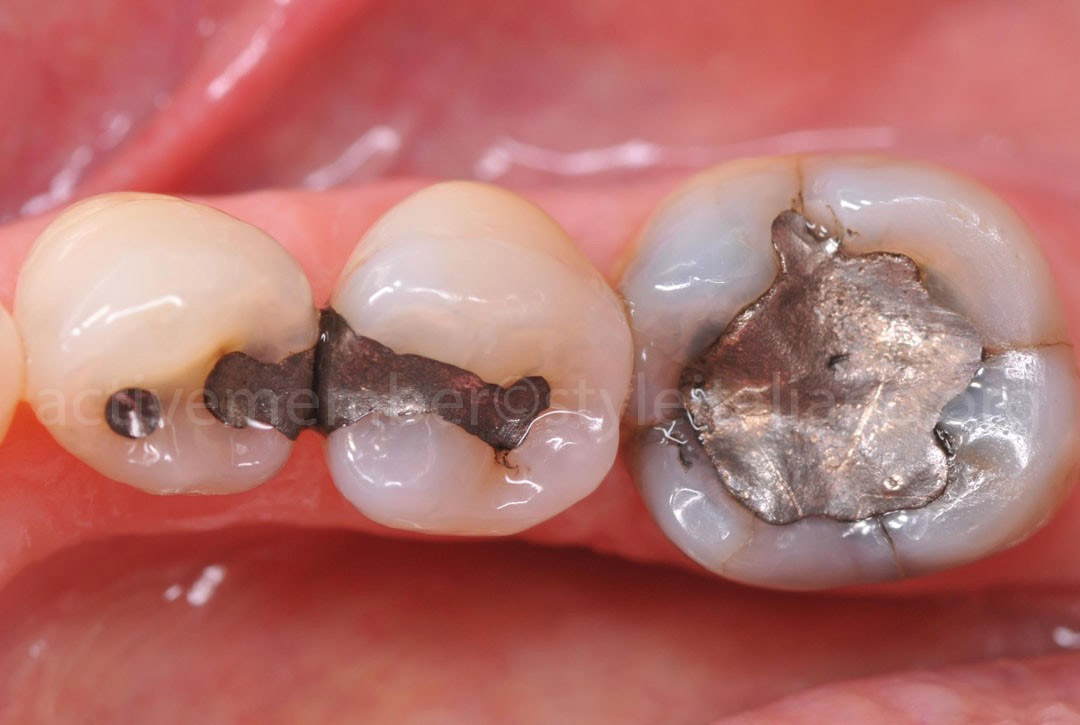
Fig.1
The initial situation involves an elderly patient with an old amalgam restoration in the lower right posterior region, which the patient wishes to have removed for aesthetic reasons.
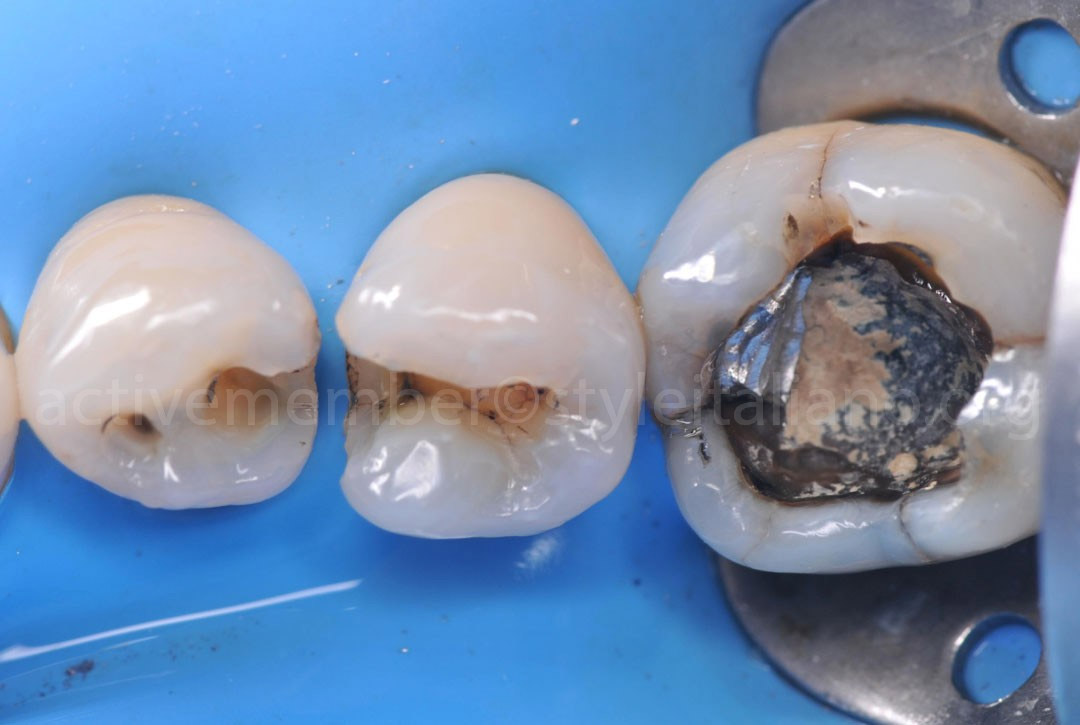
Fig.2
After applying the rubber dam, the old restorations were removed, revealing different substrates.
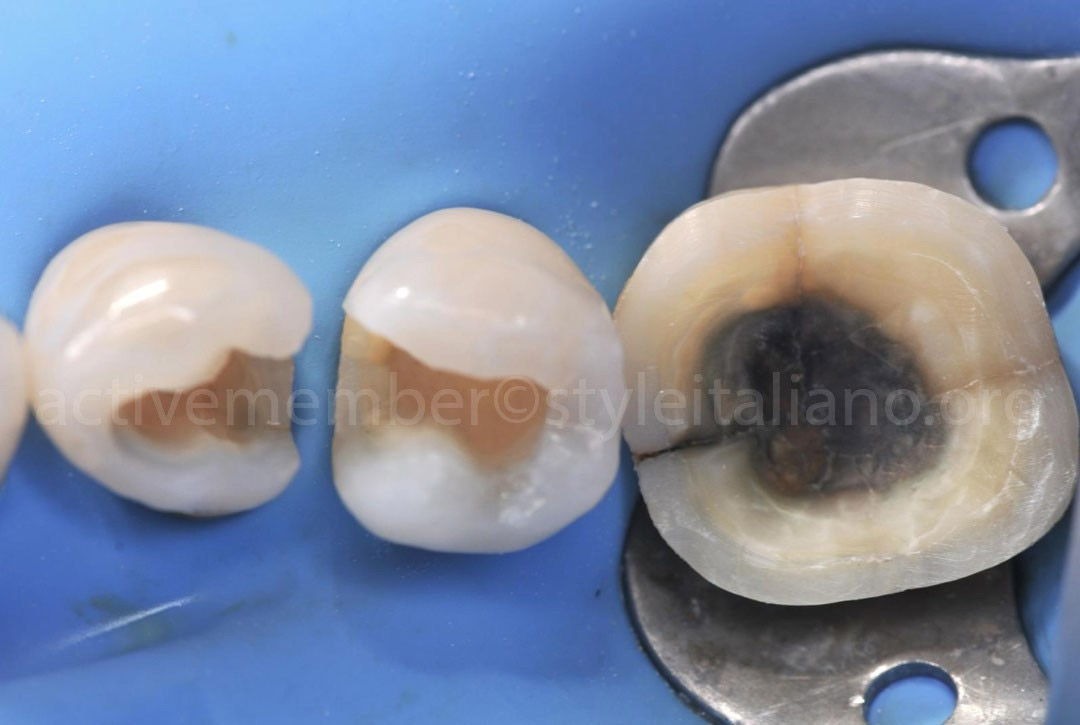
Fig.3
Final aspect of the cavity preparations: Two Class II restorations were completed, and an overlay preparation was performed on the first molar. The fracture line on the mesial wall was left untouched to prevent further propagation; it will be bonded during the cementation of the indirect restoration.
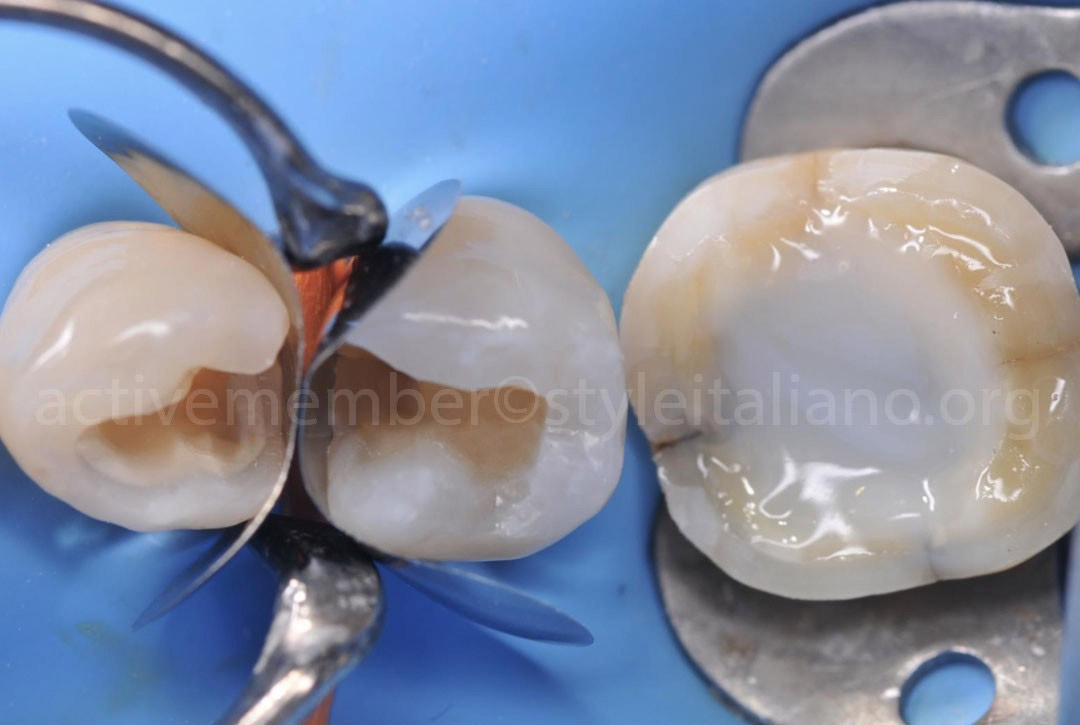
Fig.4
Immediate dentinal sealing was performed for the buildup of the first molar using SimpliShade Bulk Fill Flow by Kerr (Orange, California, USA). Following this, two sectional posterior matrices were placed and secured with an orange wedge and a ring for the Class II restorations.
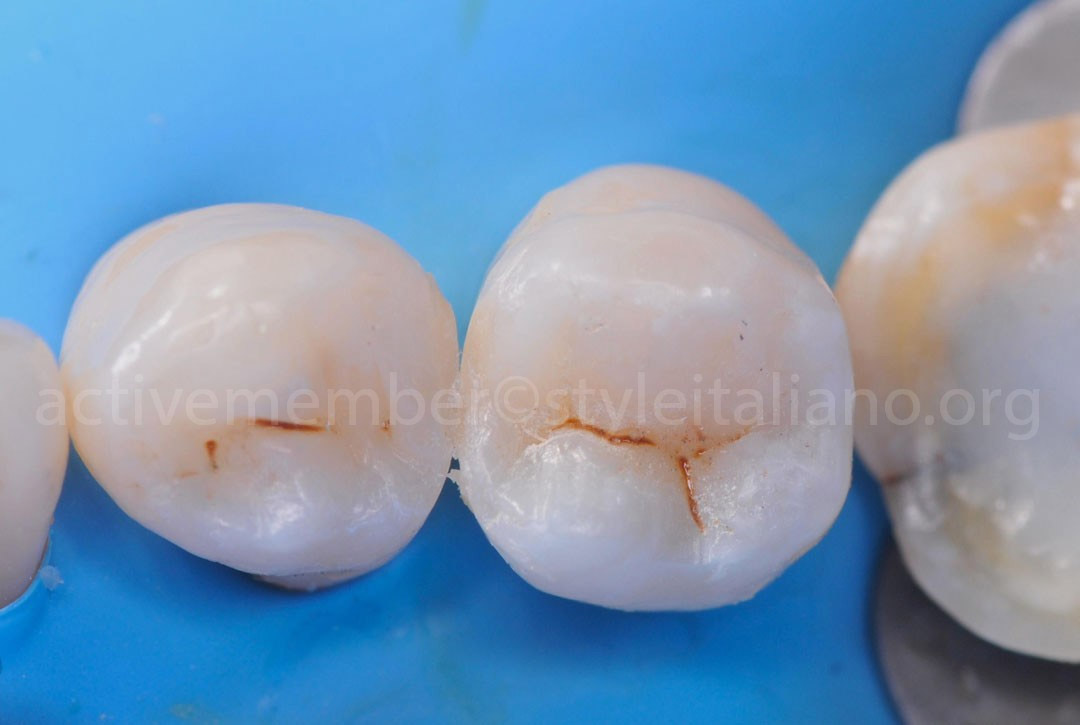
Fig.5
After the adhesive procedures, the direct restorations were completed using a single shade of SimpliShade Bulk Fill by Kerr (Orange, California, USA), followed by characterization with brown stains. Thanks to its easy handling and low shrinkage stress, it was possible to fill both cavities in a single 4 mm increment of composite. The material was then adapted and shaped using the Espresso posterior lines technique, saving valuable time.
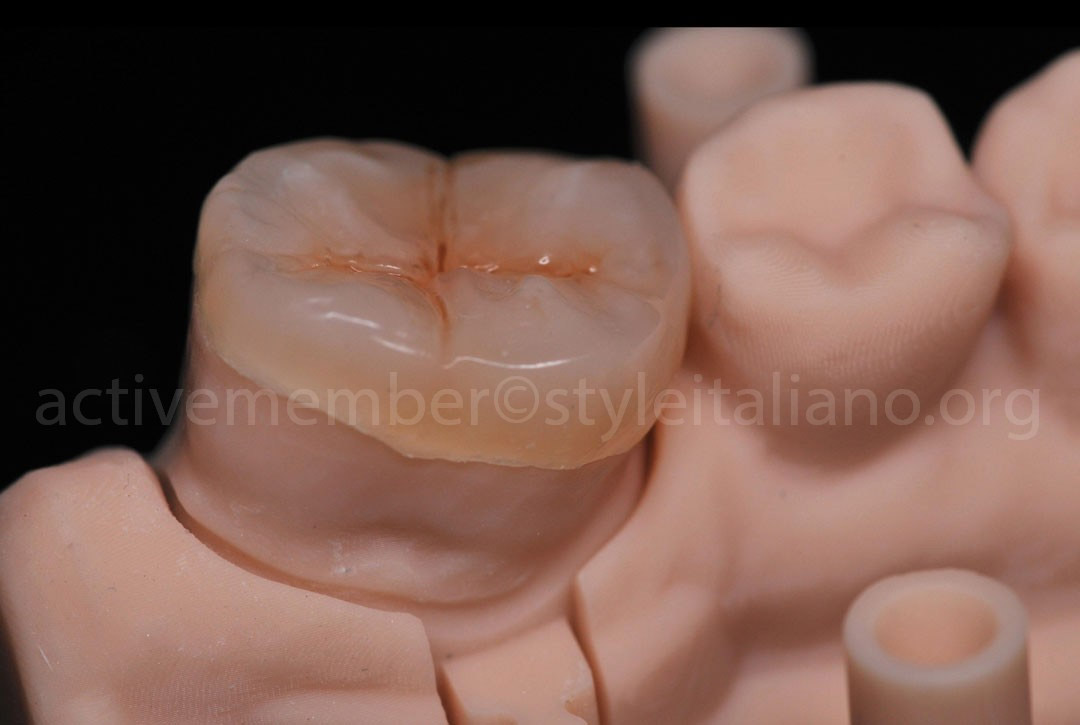
Fig.6
After completing the direct restorations, digital impressions were captured using the Helios 500 intraoral scanner by Eighteeth (Changzhou, China). The advantage of a digital workflow is that it enables clinicians to complete the treatment in a single day. In fact, the final indirect restoration was ready for cementation just one hour later.
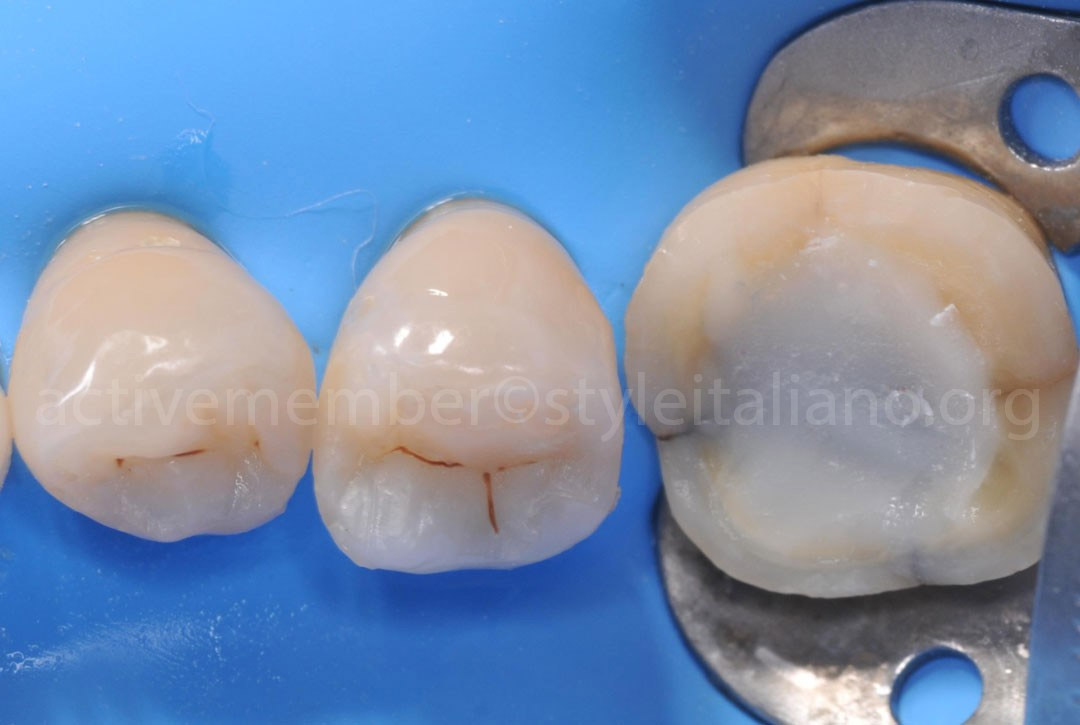
Fig.7
The rubber dam was applied for the cementation of the indirect restoration after checking the fit of the overlay.

Fig.8
After that, the adhesive procedure was performed using OptiBond Universal by Kerr (Orange, California, USA) following selective enamel etching with phosphoric acid for 20 seconds. The single-component universal adhesive was then rubbed and scrubbed into the surface, applied in two layers. After air-blowing, the universal bonding was polymerized for 40 seconds. The indirect restoration was then cemented using NX3 Universal Adhesive Resin Cement (Kerr, Orange, California, USA). A step luting technique was employed, involving the removal of excess cement prior to polymerization. The excess cement was meticulously removed using the fine tip of the LM-Fissura instrument (LM-Dental, Parainen, Finland).
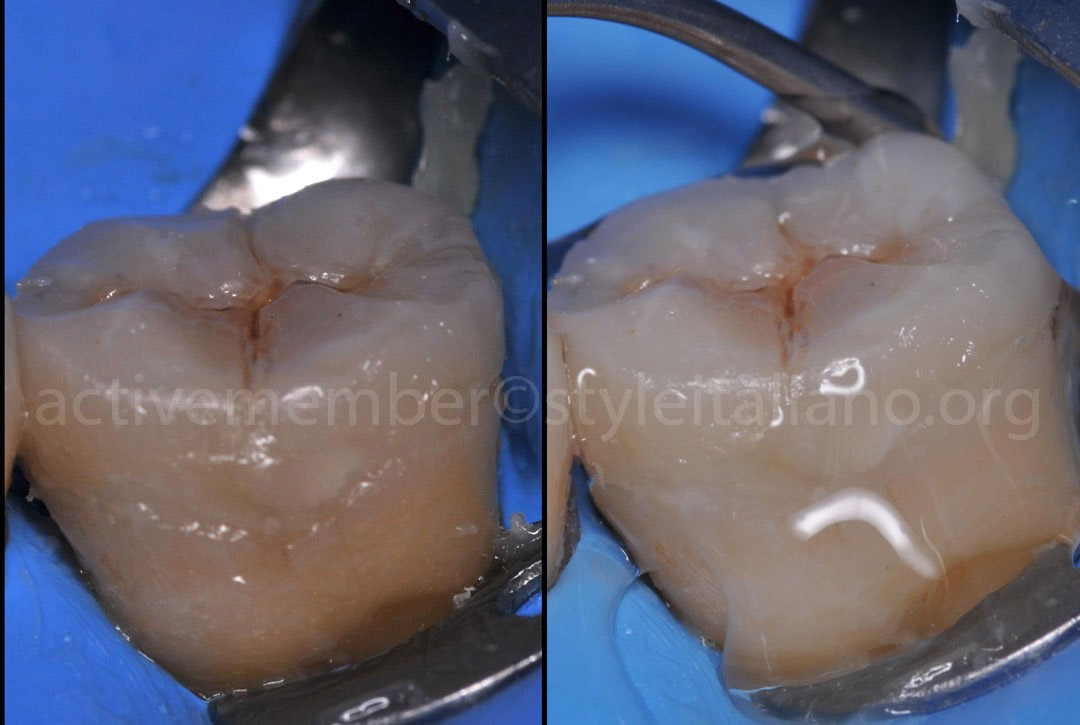
Fig.9
After removal of the excess, glycerine was applied to prevent surface oxygen inhibition, ensuring complete polymerization of the resin cement.
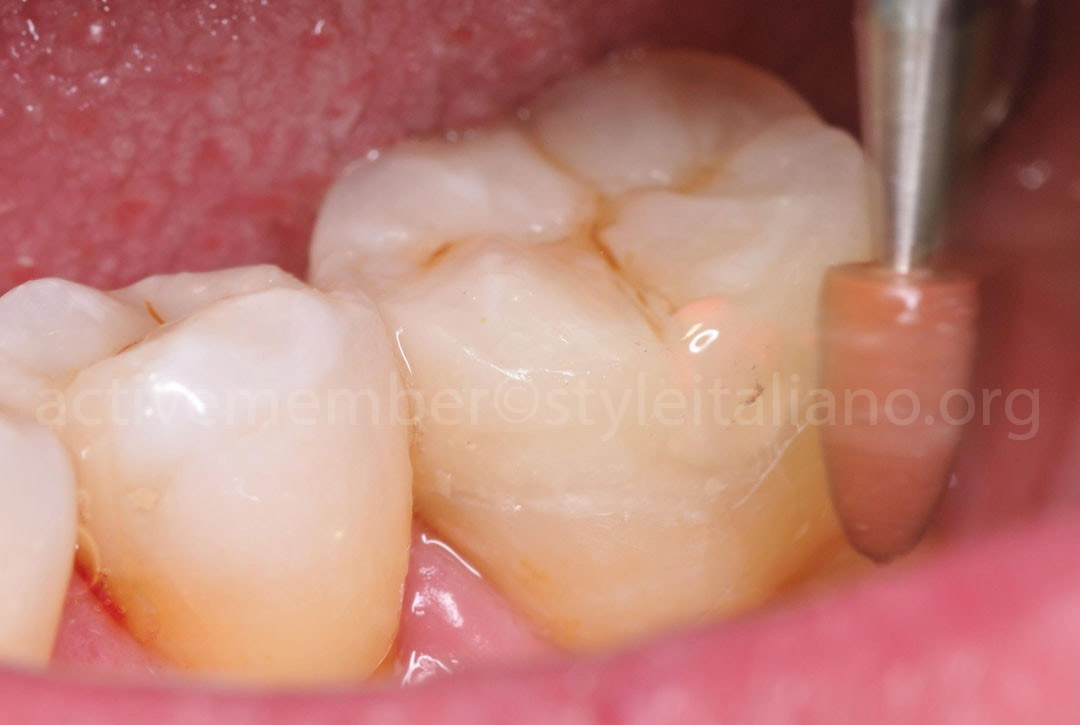
Fig.10
Therefore, the rubber dam was removed to begin the finishing and polishing procedure of the direct and indirect restorations.
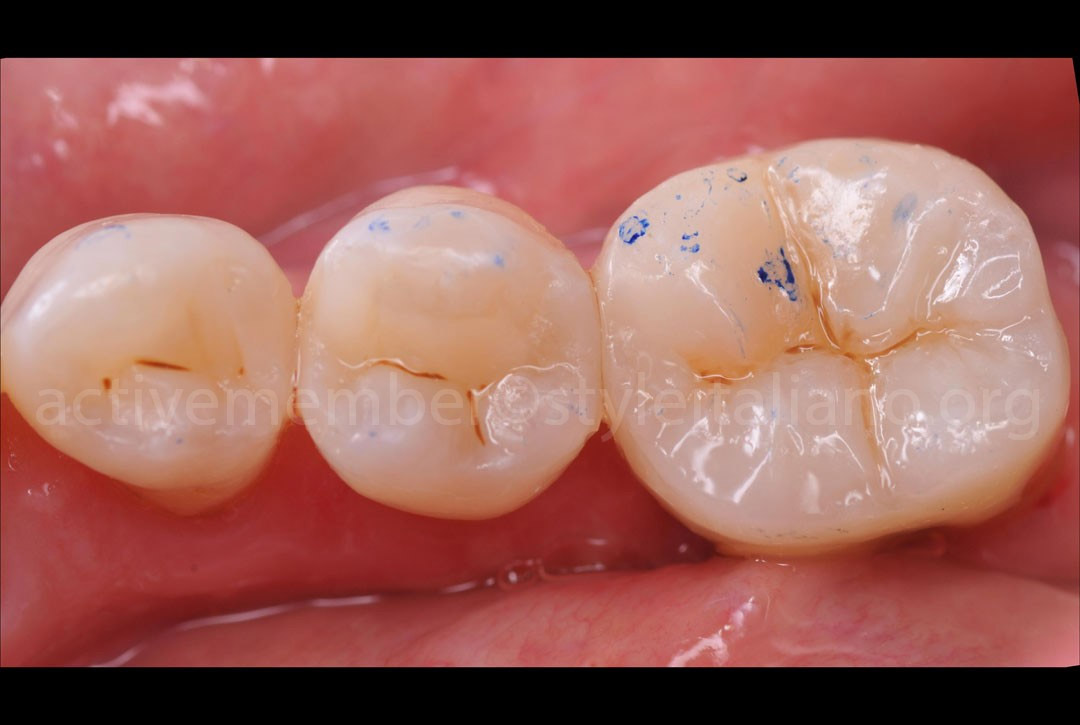
Fig.11
The occlusion was checked and adjusted as needed.
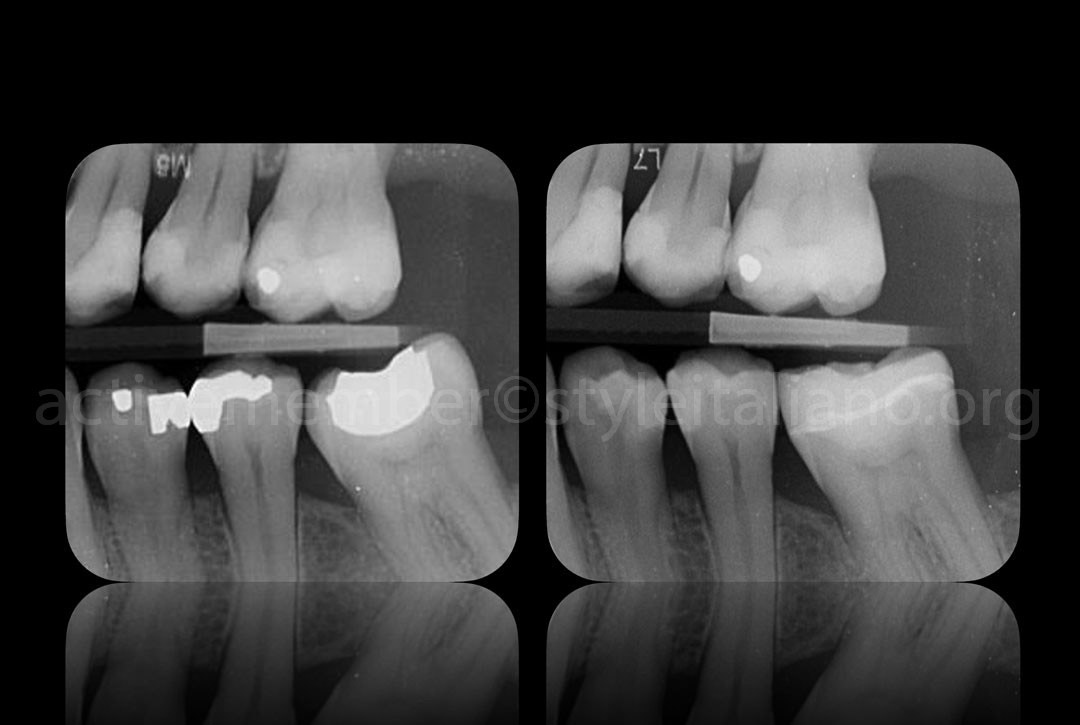
Fig.12
The radiological evaluation (left before and right after) shows the fit of the indirect restoration, with the resin cement completely sealing all margins, without any presence of excess.
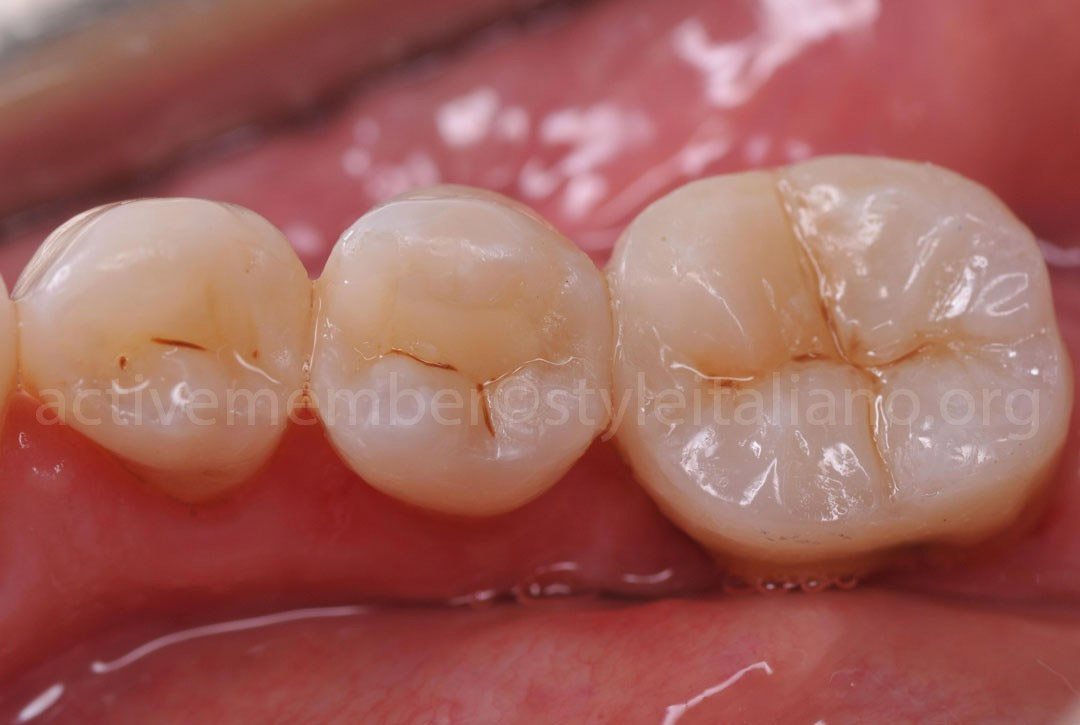
Fig.13
The final appearance after one week of follow-up.
Conclusions
In conclusion, the use of universal adhesive resins and bulk-fill composite materials simplifies dental procedures, allowing clinicians to perform complex treatments in a predictable and efficient manner. These advanced materials not only improve the efficiency of daily practice but also enhance patient satisfaction by reducing the need for multiple visits. Embracing these innovations in modern dentistry can significantly streamline workflows while ensuring high-quality outcomes.
Bibliography
1. Maravić T, Mazzitelli C, Mancuso E, Del Bianco F, Josić U, Cadenaro M, Breschi L, Mazzoni A. Resin composite cements: Current status and a novel classification proposal. J Esthet Restor Dent. 2023 Oct;35(7):1085-1097. doi: 10.1111/jerd.13036. Epub 2023 Mar 16. PMID: 36924395.
2. Hardan L, Bourgi R, Cuevas-Suárez CE, Devoto W, Zarow M, Monteiro P, Jakubowicz N, Zoghbi AE, Skaba D, Mancino D, Kharouf N, Haïkel Y, Lukomska-Szymanska M. Effect of Different Application Modalities on the Bonding Performance of Adhesive Systems to Dentin: A Systematic Review and Meta-Analysis. Cells. 2023 Jan 3;12(1):190. doi: 10.3390/cells12010190. PMID: 36611983; PMCID: PMC9818277.
3. Chiodera G, Orsini G, Tosco V, Monterubbianesi R, Manauta J, Devoto W, Putignano A. Essential Lines: a simplified filling and modeling technique for direct posterior composite restorations. Int J Esthet Dent. 2021 May 10;16(2):168-184. PMID: 33969973.
4. Tosco V, Monterubbianesi R, Orilisi G, Sabbatini S, Conti C, Özcan M, Putignano A, Orsini G. Comparison of two curing protocols during adhesive cementation: can the step luting technique supersede the traditional one? Odontology. 2021 Apr;109(2):433-439. doi: 10.1007/s10266-020-00558-0. Epub 2020 Oct 31. PMID: 33128650; PMCID: PMC7954706.
Original link: https://www.styleitaliano.org/universal-strategy-for-different-situations/
Disclaimer:
The third-party literature content referenced in this article is provided solely for the purposes of academic exchange and information sharing. It does not represent our position or endorsement of any technical parameter comparisons (if applicable) mentioned herein. The related data and conclusions are derived from independent research, and we shall not be held liable for the objectivity or accuracy of such content under any legal jurisdiction.